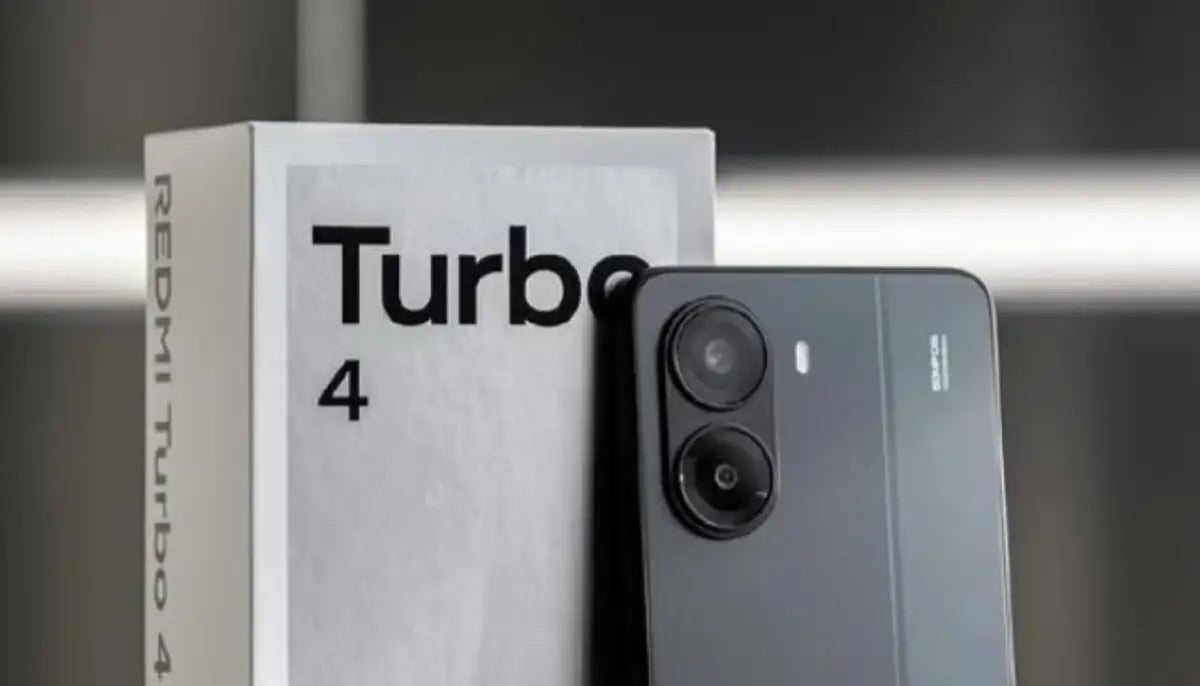In a market saturated with releases that seem to differ only in chassis color or the number of megapixels that we never fully take advantage of, Xiaomi has once again done what it does best: rock the boat. The new Xiaomi Redmi Turbo 4 Pro not only seeks to redefine what we understand by "high-end mid-range," but also makes a direct statement to its competitors: raw power and a premium experience are no longer the exclusive privilege of smartphones costing over a thousand dollars.
But is this just well-packaged marketing, or are we really facing a technologically-based disruption that makes practical sense for the user?
Snapdragon 8s Gen 3: The engine behind the muscle
Let's start with what is undoubtedly the star of the show: the processor. Xiaomi has opted for the Snapdragon 8s Gen 3 , a strategic choice that deserves attention. This chip inherits much of the architecture of the Snapdragon 8 Gen 3 (Qualcomm's current top-of-the-line model), but with some smart cuts in GPU and clock speed. In other words, it offers flagship-level performance, but with more energy-efficient and, above all, a significantly lower price.
This type of choice is no small feat. In practical terms, this means that demanding games like Genshin Impact or Call of Duty: Mobile run at a stable 60 fps with high graphics quality, something unthinkable in this price range just a year ago. Furthermore, the chip demonstrates superior thermal efficiency, avoiding the typical thermal throttling that frustrates so many users.
Display and design: One step closer to the flagship
The Redmi Turbo 4 Pro features a 6.67-inch OLED panel with 1.5K resolution and a 120Hz refresh rate. While these specs are no longer a surprise to find in mid-range phones, what really stands out here is the color calibration and peak brightness of up to 2400 nits, which puts this panel above several premium devices from last year.
Aesthetically, the design is restrained, even sober, and it's clear that Xiaomi is targeting a more mature audience, who prefer functionality over ostentation. The weight is well distributed (around 190 grams), and the matte glass back resists fingerprints well, although the plastic frame may disappoint purists.
AI, photography and contextual computing
This is where the discussion gets more interesting. Xiaomi has incorporated a triple camera setup with a 50MP Sony IMX882 main sensor , accompanied by an 8MP ultra-wide-angle lens and a 2MP macro lens. While the numbers aren't impressive on their own, the integration of AI algorithms for image processing changes the conversation.
Computational photography here is solid, especially in Night mode, where AI improves sharpness without introducing excessive noise or harsh artifacts. We're not quite at the level of the Pixel 8, but for its price, the Turbo 4 Pro delivers perfectly competitive results with phones twice its price.
However, there are some questionable decisions: the macro sensor seems more decorative than functional, and a telephoto lens is missing, even if it's a digital one powered by AI. This shows that there are still compromises in this range.

Software and user experience: HyperOS, a step forward
With the debut of HyperOS in this range, Xiaomi has managed to streamline the MIUI experience, which, while versatile, was burdened with bloatware and aggressive customizations. HyperOS is cleaner, faster, and much more intuitive. Integration with Google services is almost seamless, and small details like the improved haptic engine or the granular customization of the Always-On Display are appreciated.
In Chile , where consumers value both the price/performance ratio and the durability of the software, this change could mark a turning point. Especially if Xiaomi keeps its promise of three years of major updates and four years of security patches.
Trends, sustainability, and the future of the affordable smartphone
The Redmi Turbo 4 Pro isn't just another smartphone with good performance at a low price. It aligns with several current market trends: AI power , energy optimization, advanced photography without the need for massive sensors, and a cleaner software experience.
However, it falls short in one area: sustainability. Although Xiaomi has made progress in packaging recycling and plastic reduction, the Turbo 4 Pro doesn't offer notable modularity or repairability, which is an outstanding issue for the entire industry.
And in the Chilean context?
The Chilean market has shown growing maturity in smartphone demand. The average Chilean consumer is no longer swayed by brand names alone: they analyze features, compare prices, and demand updates. In this context, the Redmi Turbo 4 Pro has real potential to become a bestseller. Provided it comes at a competitive price (ideally under CLP $400,000), it could be the ideal option for students, mobile gamers, and power users who don't want to mortgage their wallets for power.
Revolution or Evolution? A Look into the Future
In short, the Xiaomi Redmi Turbo 4 Pro doesn't reinvent the smartphone , but it does reinvent the way we think about what we should expect from a mid-to-high-end device . And it does so with a formula that's dangerous for the competition: outstanding hardware, an affordable price, and an increasingly refined user experience.
From my perspective, this is more than an incremental evolution. It's a clear sign that the barrier between mid-range and high-end is disappearing , and that in the near future, the premium experience will become increasingly democratic.
And now I ask you:
Do you think Xiaomi is truly redefining the mid-range, or is it just another well-executed marketing promise?
Leave it in the comments.

